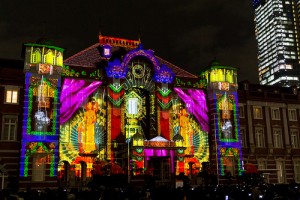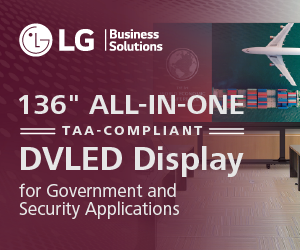It seems flat panel displays are virtually everywhere these days and have gotten larger, thinner, lighter, and less expensive than ever. Not that long ago in applications requiring a large image a projector was the natural choice, however as flat panels have evolved you are now seeing them installed where historically it would have been a projector. I am not denying the benefits of using a flat panel display, but there are many reasons why projection would be the way to go.
For starters, let’s look at image size. Generally speaking 98” is about the largest flat panel that is readily available at this time. So in instances where an image of larger than 98” diagonal is required, projection becomes the only option to use for a single display device without the complexity of multi-screen video walls. This is pretty clear cut, but size is not the only consideration.
 Often audio visual components are integrated into high end architectural spaces including corporate board rooms, lecture centers, training facilities, and more where the display device may not always be in use and for aesthetic reasons the client may not want to “see” the technology in the room. Most projectors are ceiling mounted and generally out of view or can be installed in a lift that can disappear into the ceiling. Projection screens also can disappear when not in use by recessing flush into the ceiling.
Often audio visual components are integrated into high end architectural spaces including corporate board rooms, lecture centers, training facilities, and more where the display device may not always be in use and for aesthetic reasons the client may not want to “see” the technology in the room. Most projectors are ceiling mounted and generally out of view or can be installed in a lift that can disappear into the ceiling. Projection screens also can disappear when not in use by recessing flush into the ceiling.
Another key consideration is cost. While flat panels have certainly become affordable, however once you get up into the larger sizes above 80”- 90” the costs can still be prohibitive in many cases where projection will often be much more affordable. For illustration purposes consider a 98” professional grade monitor at a cost of $32,679.00 compared to an installation class projector like the Epson PowerLite Pro G 6770WU which is 1920×1200 resolution at 6000 lumens available at a retail price of $5,699.00.
When it comes to unique display applications there are times when a flat panel display is simply not an option. Think about events where you have projection on floor surfaces or on buildings. With projection mapping some really unique projects can be pulled off. A really cool example of this was recently featured in a case study on the basketball arena at Pensacola Christian College using Epson Pro G projectors:
Both flat panel displays and projectors have their pros and cons, however projection is still and will continue to be a great choice for many display applications. For assistance in selecting the right Epson projector or to learn more, contact Brian Rhatigan at [email protected] or 888.420.2566 x6546.









